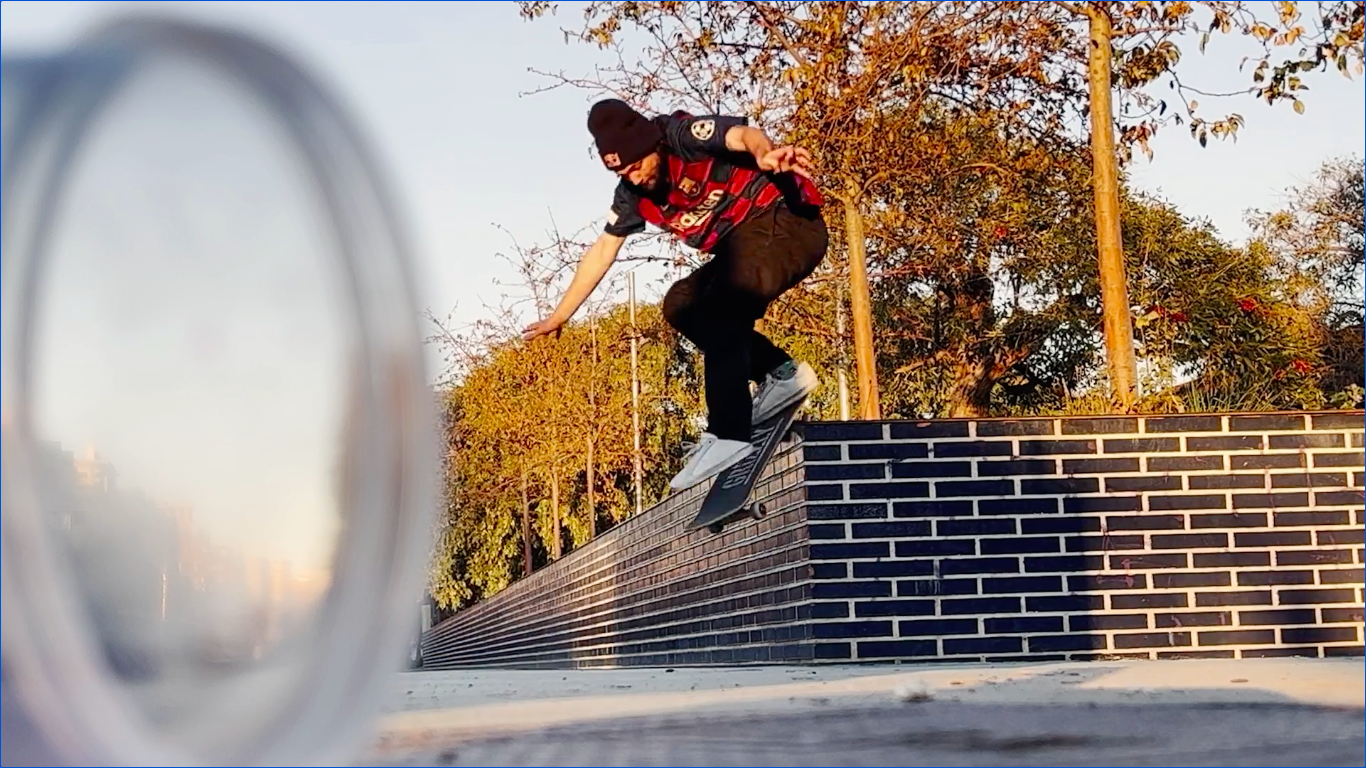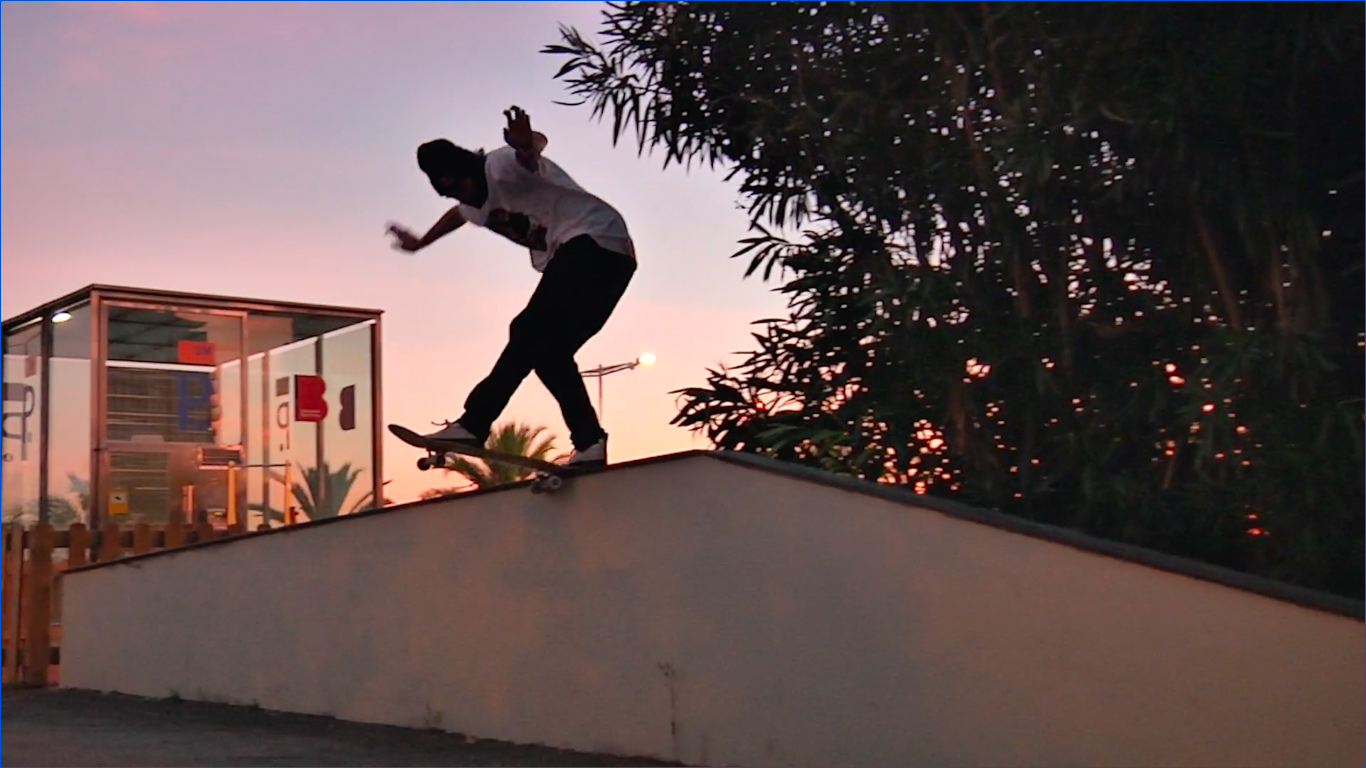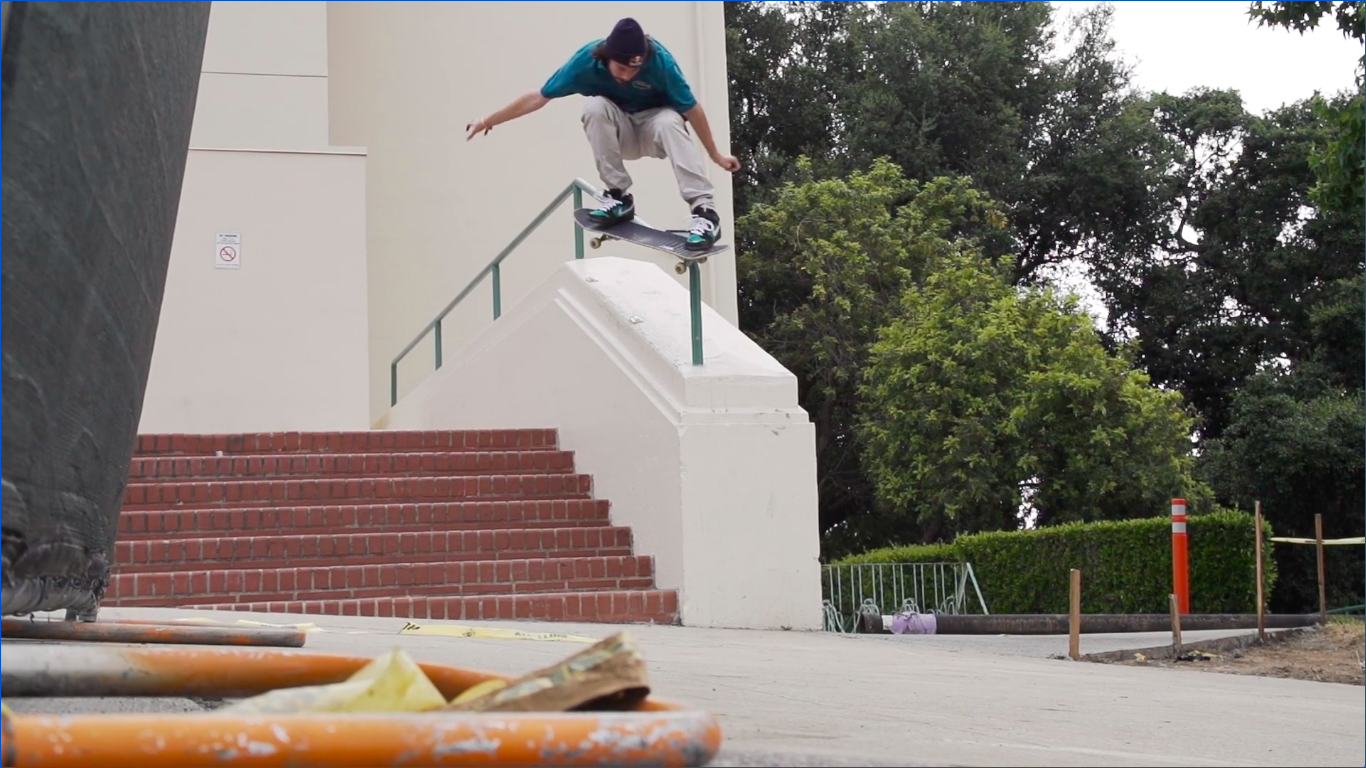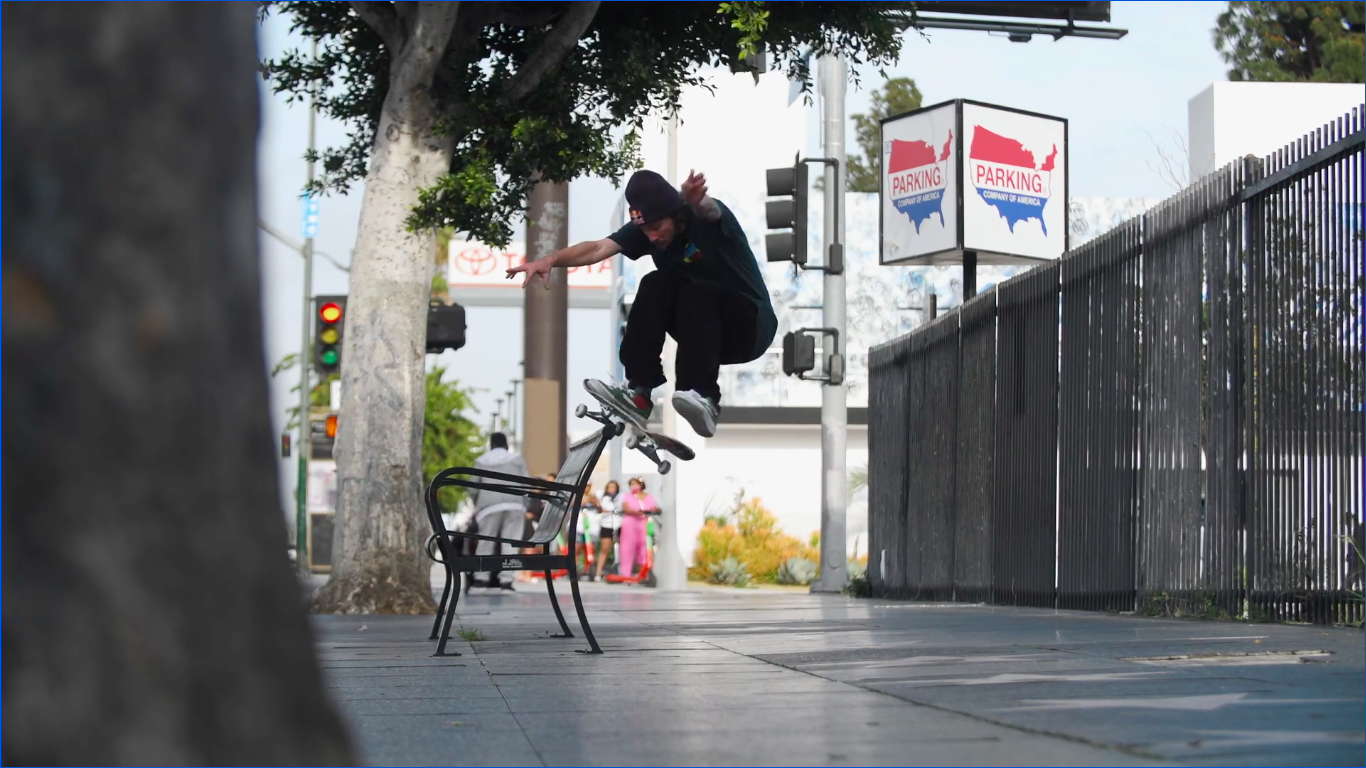How To Go Pro | Part I: “Hyperreal”
To most members of the skateboard cognoscenti, Torey Pudwill would be an unlikely subject for a profile of this kind. Goofy, charming, and talented, he nonetheless lacks the typical niche appeal that marks one as an authentic member of the skateboard subculture, his brand of skating wearing the albatross of effort and mass appeal around its neck. In many ways, as skating changed over the last decade, he seemed more and more to represent an outdated version of skate culture, as well. Other skaters became models, artists, rappers, fashion designers, filmmakers, and podcasters, all transforming themselves into arbiters of taste, and the embodiment of the creative lifestyle. They never wait on line, so to speak. Pudwill, however, foregrounded skating in virtually all aspects of his life. It was not only his personality, it was his business.
And yet, over the course of the last year, I came to believe that TPud was perhaps the most important skater of the post-digital era, embodying the ambiguities of the 2010s better than any other skater. Indeed, it was an incredibly tumultuous time, a period during which skateboarding’s most trenchant institutions were called into question. During this decade, skate culture’s long standing talent for self-produced video content, and its dedication to stylish bad boys, made it almost readymade for social media, and, as such, it proliferated into all corners of the internet, to some extent, losing the control of its loosely defined historical arch. Its awkward growing pains made for an interesting saga, and I relished in the many ways skate culture adapted, or resisted the changes that were thrust upon it. Rather than sending a VHS tape to a skate company’s office in Torrance, CA, sponsor-me tapes were immediately posted to YouTube. Skaters were discovered on Instagram and immediately turned pro. Almost every skate magazine went out of business. Punditry expanded, first on IG, then jumping the shark to TikTok, talk shows, and podcasts. The Berrics happened. And the Tokyo Olympics.
And yet, over the course of the last year, I came to believe that TPud was perhaps the most important skater of the post-digital era, embodying the ambiguities of the 2010s better than any other skater. Indeed, it was an incredibly tumultuous time, a period during which skateboarding’s most trenchant institutions were called into question. During this decade, skate culture’s long standing talent for self-produced video content, and its dedication to stylish bad boys, made it almost readymade for social media, and, as such, it proliferated into all corners of the internet, to some extent, losing the control of its loosely defined historical arch. Its awkward growing pains made for an interesting saga, and I relished in the many ways skate culture adapted, or resisted the changes that were thrust upon it. Rather than sending a VHS tape to a skate company’s office in Torrance, CA, sponsor-me tapes were immediately posted to YouTube. Skaters were discovered on Instagram and immediately turned pro. Almost every skate magazine went out of business. Punditry expanded, first on IG, then jumping the shark to TikTok, talk shows, and podcasts. The Berrics happened. And the Tokyo Olympics.
Within the industry, major shoe brands finally penetrated the fickle skate world, injecting new money that widened the gap between the haves and the have nots. Direct-to-consumer (DTC) commerce also reshaped the industry, both giving rise to a long-tail of bedroom brands, and adding to the culture’s increasing decentralization and precarity. In the midst of this tumult, other bright spots emerged, as well. Skateboarding was, in part, democratized by these new technologies, opening the door to new, diverse communities, and upending the typically white-male dominated culture. New voices could guide the narrative, both in the United States and, increasingly, abroad.
In any case, as I sifted through these many subjects, looking for a way to tie them together, I uncovered some unexpected details, details that challenged my assumptions about a period I thought I knew well. As large writing projects tend to do, these new revelations truly shifted my perspective, and I soon felt that one of the most interesting themes to emerge from this decade was not the long tail of skate content that flowed from niche communities around the world, or how old pros reconciled with sobriety, or the new diversity within the scene, all important issues based around maturity and accountability that would be the typical provenance of the intellectual skater. Rather, it was an exception to this condition of dispersion, one of skateboarding’s biggest stars, that caught my attention: Torey Pudwill.
In any case, as I sifted through these many subjects, looking for a way to tie them together, I uncovered some unexpected details, details that challenged my assumptions about a period I thought I knew well. As large writing projects tend to do, these new revelations truly shifted my perspective, and I soon felt that one of the most interesting themes to emerge from this decade was not the long tail of skate content that flowed from niche communities around the world, or how old pros reconciled with sobriety, or the new diversity within the scene, all important issues based around maturity and accountability that would be the typical provenance of the intellectual skater. Rather, it was an exception to this condition of dispersion, one of skateboarding’s biggest stars, that caught my attention: Torey Pudwill.
My research quickly revealed an irrefutable impact on skateboarding dating from the release of his Big Bang part in 2010 to the present: three Thrasher covers, Transworld Skater of The Year, owner of two companies, and several successful pro model shoes for DVS. He even skated with Lil’ Wayne more than once. The list goes on, but what makes his appeal so hard to pin down is not how much he changed how we think about skateboarding, but rather, how much he deviates from the image the skate industry put forth. Among the cognoscenti, skaters like Dylan, Jake Johnson, Tyshawn Jones, or even Max Palmer drove the narrative. But more people looked like Pudwill, their appearance a startling collage of de-contextualized references they encountered online (i.e. a Monster Energy tattoo, weed socks, tie-dyed griptape, a lip ring, an “I ♥️ Haters” shirt, and maybe an errant dreadlock or man bun).
Sometimes, I think the world of skateboarding can be divided into two camps: people for whom skateboarding is the most interesting thing about them, and interesting people who skate. A similar tension is at the heart of Pudwill’s career as well, as he seems to have a foot in each camp, an unlikely position that calls into question skateboarding’s most prized value: authenticity. And it was this question that drove my inquiry, because I, like so many of my friends, had written Pudwill off, this in spite of those monstrous kickflips, the uncanny valley of his video game-like combos, the hyperrealism of his gargantuan pop. I was particularly obsessed with the numerous day-in-the-life videos he stars in, all of which follow virtually the same routine, even though they were filmed years apart. These seemed somehow to hold the key to his ongoing stability during such a fickle era, to appear relatable, even if his life matured from a typical skate rat into the banality of entrepreneurship. Sadly, however, after completing the essay on Pudwill, the project went silent. Like an old skateboard abandoned in the garage, the document remained tucked away on my google drive, the wheels yellowing over time.
Sometimes, I think the world of skateboarding can be divided into two camps: people for whom skateboarding is the most interesting thing about them, and interesting people who skate. A similar tension is at the heart of Pudwill’s career as well, as he seems to have a foot in each camp, an unlikely position that calls into question skateboarding’s most prized value: authenticity. And it was this question that drove my inquiry, because I, like so many of my friends, had written Pudwill off, this in spite of those monstrous kickflips, the uncanny valley of his video game-like combos, the hyperrealism of his gargantuan pop. I was particularly obsessed with the numerous day-in-the-life videos he stars in, all of which follow virtually the same routine, even though they were filmed years apart. These seemed somehow to hold the key to his ongoing stability during such a fickle era, to appear relatable, even if his life matured from a typical skate rat into the banality of entrepreneurship. Sadly, however, after completing the essay on Pudwill, the project went silent. Like an old skateboard abandoned in the garage, the document remained tucked away on my google drive, the wheels yellowing over time.
Well, it seems that with the release of Pudwill’s latest part, Bigger Bang, as well as This is GOOD WORK, another day in the life video that preceded it by a few months, it’s time. To be clear, the following text does not address the latest videos. It focuses on all the material I could gather by Winter 2021-22. Yet, in a testament to Pudwill’s enduring consistency, all the same subjects still apply to the new footage. Like the Dude, or other historical figures, he embodies his time and place, both a product of his environment, as well as someone that seems to recognize his own destiny—uh, at least maybe, from a skating perspective, anyway. It is perhaps safer to say that Pudwill is the unlikely hero of this story about how skateboarders mythologize themselves in the post-digital era, an exception that seems to prove those ever-unspoken rules at the heart of skate culture. We might even say that, like the hero of any coming-of-age story, he, to some extent, learns to speak on his own terms—at least within the space that is available to him. Clearly, nothing is going to stop him from achieving a dream he’s had since he was a child: to become a pro skater, no matter what it takes in the modern era to do that. It’s for this reason, I would argue that Pudwill is perhaps the most influential skater of the last decade, something he proves again and again, no matter the ambiguity surrounding the results. >>> Part II



